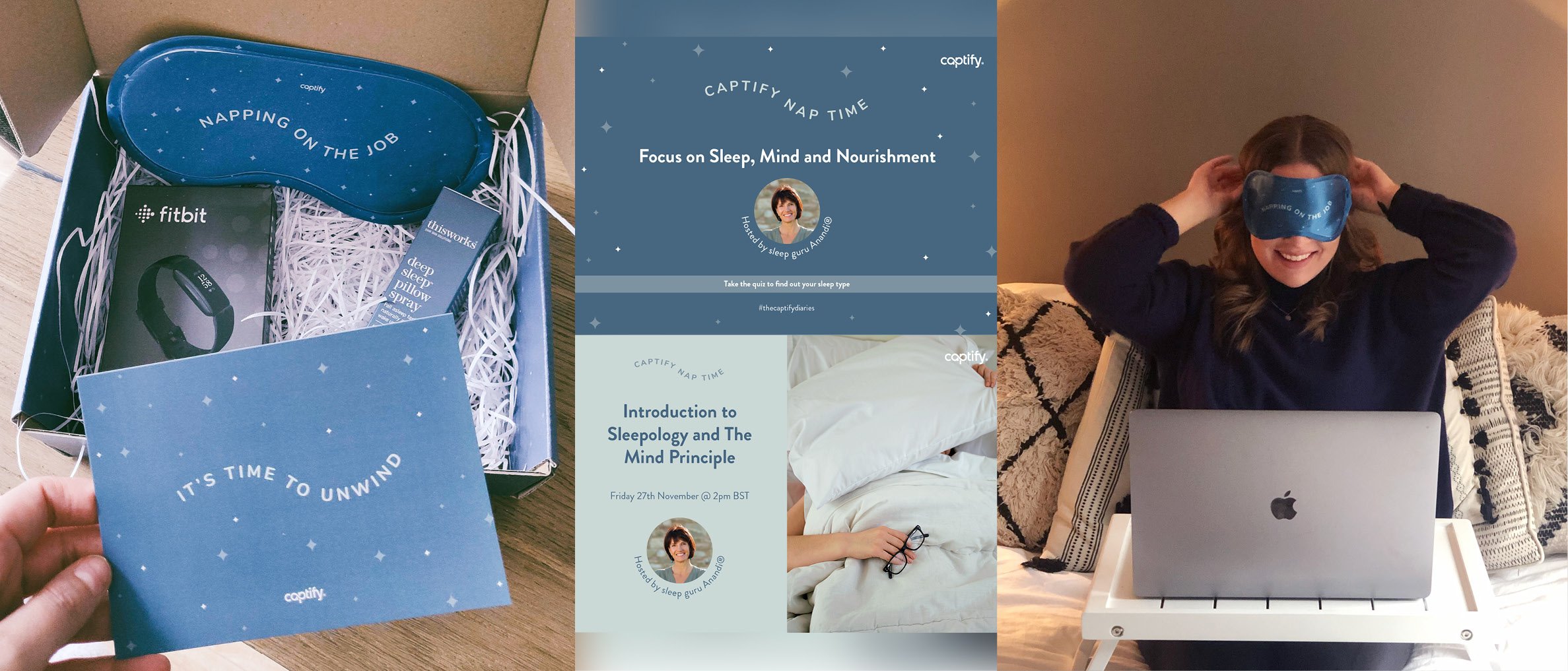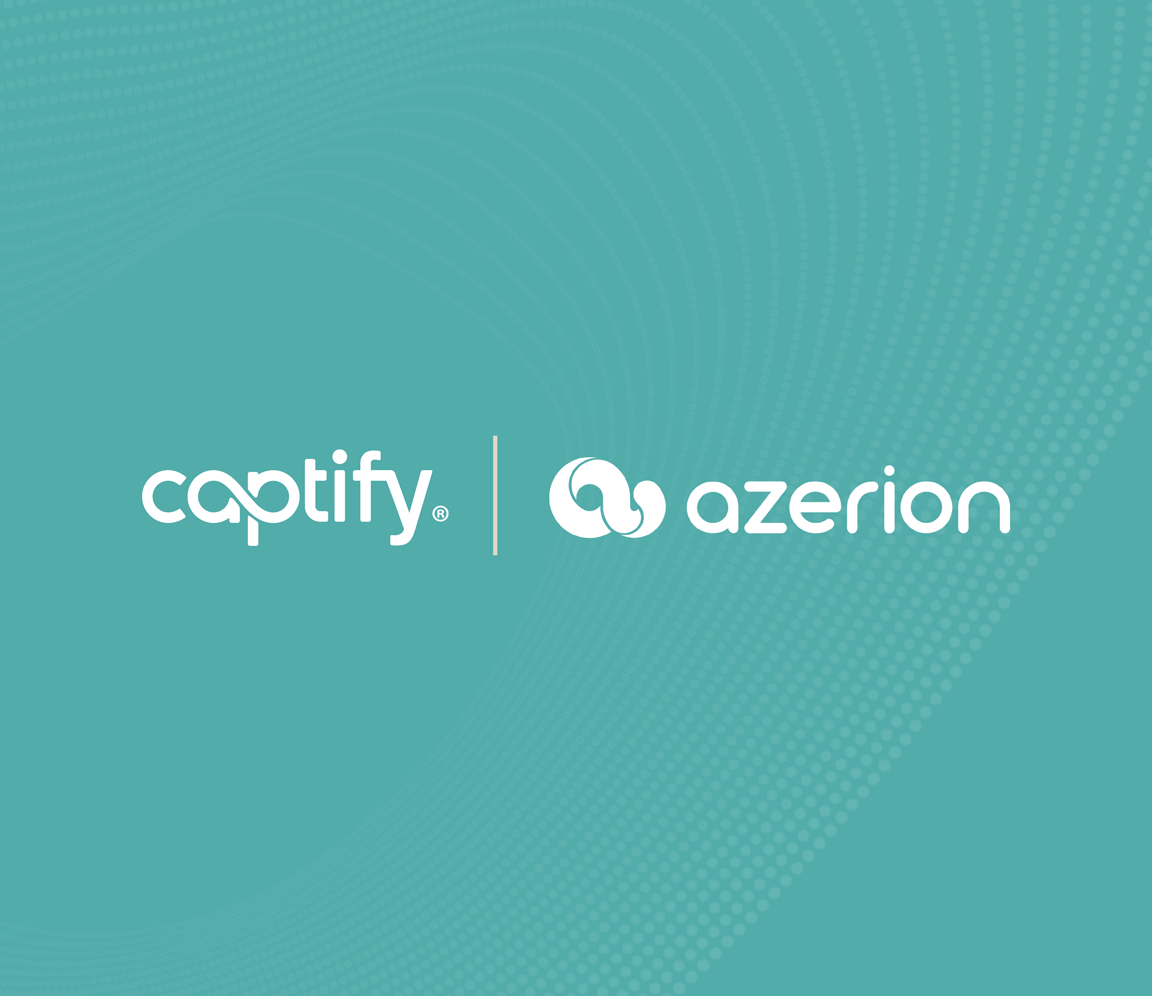Napping On The Job, Sleepology and Data-Informed People Wellness Strategies With Captify’s VP of People, Sophie Theadom
Captify’s VP of People, Sophie Theadom, talks about the importance of taking a data-informed approach to people’s mindfulness, and how sometimes what our team needs the most might not be what we expect.
How did you and your team approach the changes around working from home and the sudden lack of in-person connection employees were facing?
In the face of drastic change over the past ten months, it became challenging for our managers, leaders and People Team to get a deeper and more frequent pulse on morale, welfare and how Captifyers were feeling in a new remote working world we all so quickly experienced. To stay in touch with how Captifyers were truly managing these changes, instead of making assumptions, we implemented a system called Officevibe, which offers employees a safe space to share their experiences and tell us what they really need in this new climate to feel happy and healthy.
We recognized everyone’s circumstances were different – some living alone, some missing family abroad and many now juggling both work and homeschooling – and anticipated that wellness would be a critical focus, but wellness can mean a lot of different things. We knew our existing programs would need to evolve, so we dug into the direct feedback and looked at data from different sources and found that sleep continued to emerge as a prevalent sore spot.
What are some of the data sources that you and your team considered? What did the data tell you?
Officevibe was critical, our internal daily pulse that helps understand the mood, sentiment, stress levels and feedback of our teams globally. Feedback was consistently around how sleep patterns have changed, and with this insight we shared a sleep-focused survey to understand what the changes actually meant and found that over 60% of our employees were sleeping more, but they were much more restless and therefore not getting a quality night’s sleep. In addition, over 50% of our employees were having more vivid dreams and scientific research suggests this is a clear sign of sleep deprivation.
We also leaned on Captify’s data and found that it was consistent with the feedback from our own employees. Over the course of the past few months, the data revealed two major shifts in sleep trends: 1) an increase in people searching for sleep aids, mindfulness and meditation to overcome sleep deprivation and 2) the peak time of day searches moving from early evening to past midnight.
We looked at a couple of additional sources, including monitoring how long periods of wet and dark weather had an impact on our teams and also at the declining participation in standard zooms, so we knew we needed to take a different approach.
How did you make that data actionable?
Once we had all of the data collected and analyzed, we created a company-wide, global wellness program with an emphasis on sleep to address the challenges we knew Captifyers were facing.
The first step of the program was three live workshops hosted by Anandi®, founder of the Sleep Guru and a leading sleep therapist, author and developer of Sleepology, focused on discovering and learning how your mind, nervous system and good mental and physical nourishment can positively influence the quality of your sleep. A sleep survey beforehand helped each person see what type of sleeper they were, so they could attend the workshop looking for ways to change their behaviors as part of their individual journey. Each Captifyer also received a kit with the essentials to promote a good night’s sleep – including a Fitbit, sleep mask and calming pillow spray.
The program won’t stop there. We have exciting plans for our team to be able to measure what the impact is. The program was implemented over the course of Q4, in this quarter we will kick off a series of challenges and activities that will help embed that behavior going forward and track how sleep is improving.
We also introduced ‘Autumn Hours’, where we closed the office every other Friday afternoon throughout the fall months to provide extra time for Captifyers to get outside, change scenery and enjoy fresh air before the weekend.
Why is it so important to take a data-driven approach to mindfulness?
Our biggest learning at the beginning was the importance of giving our people the chance to tell us what they need and taking that data to develop a plan that would ultimately drive the most impact. It’s all well and good to have a variety – but the only way to know what would truly make a positive difference is to have insight into what was actually going on with our Captifyers.
There is significant evidence that shows the link between sleep and health, wellbeing, and in many instances, happiness. It was so important for us to uncover sleep as one of the main drivers of wellness challenges, so we were able to deliver a program to our team that would be meaningful, instead of providing something that would only make a superficial difference.



